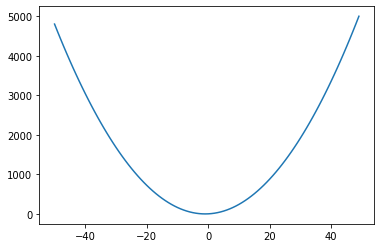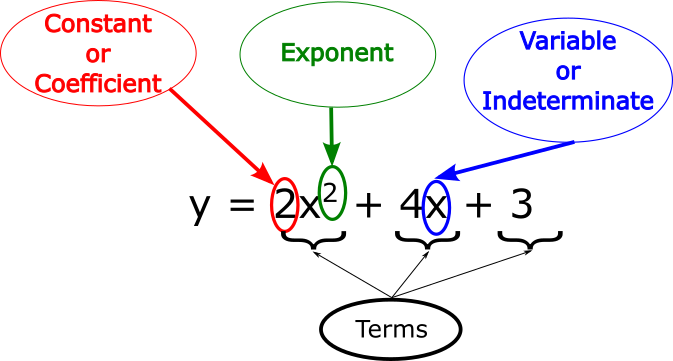Python-Programming-Lesson-Notes
Polynomial
What is a polynomial
According to Wikipedia:
In mathematics, a polynomial is an expression consisting of indeterminates (also called variables) and coefficients, that involves only the operations of addition, subtraction, multiplication, and non-negative integer exponentiation of variables. An example of a polynomial of a single indeterminate x is 3x3 + x2 − 4x + 7.
For the non-mathy people (like me who need detail): 3x3 + x2 − 4x1 + 7x0. Mathematicians know that x1 = x (pronounced as x to the power of 1) and x0 = 1 (pronounced as x to the power of 0) which is why they shorten it to the expression as given in the first instance. The 1 and the 0 (the power to which the x is raised) is called the exponent.
The results of an equation like this can be drawn as a graph:

The x, in the expression, is called a variable and the number in front of the variable is called a constant or coefficient.

If our expression is:
y = 2x2 + 4x + 3
or, if extended:
y = 2x2 + 4x1 + 3x0
then we can define it in Python as follows:
x = 5
coefs = [2, 4, 3]
y = coefs[0] * x**2 + coefs[1] * x**1 + coefs[2] * x**0
print(y)
In this exercise we want you to replace the third line of the above program with a for-loop.
Hint
The built-in function enumerate takes a sequence (e.g. a list) and generates a new sequence of the same length. Each element of the new sequence is a pair composed of the index (0, 1, 2,…) and the value from the original sequence:
for idx, val in enumerate(a_list):
# Do something using idx and val
Solution
x=5
coeffs = [2,4,3]
y = 0;
for idx,val in enumerate(coeffs):
y = y + coeffs[idx] * x ** idx
print(y)
What would be the advantage of using a for-loop?